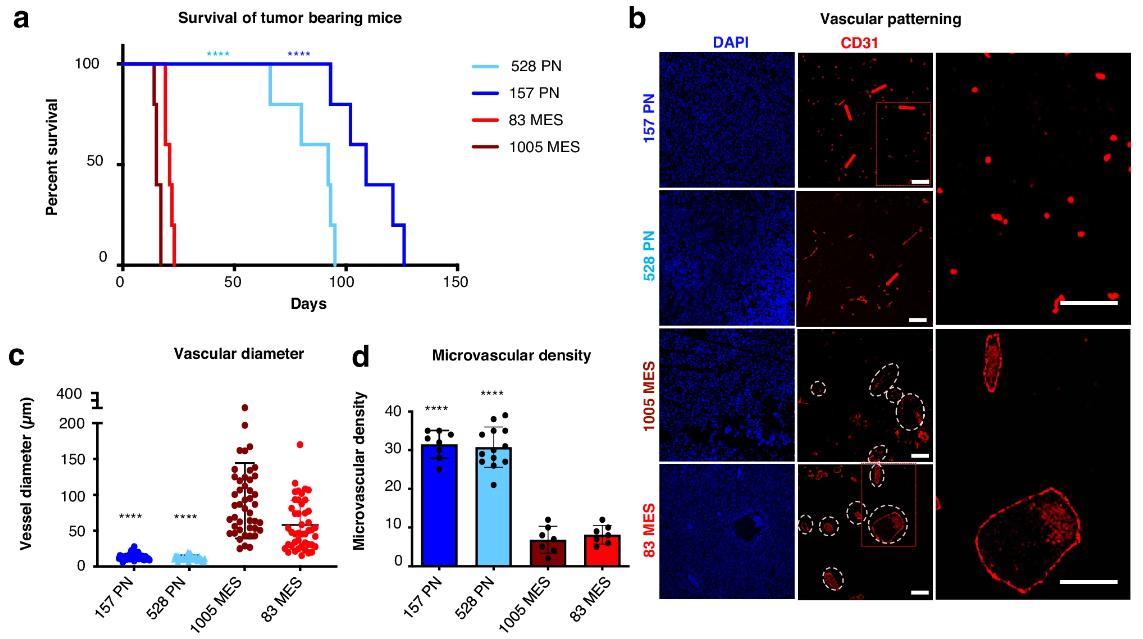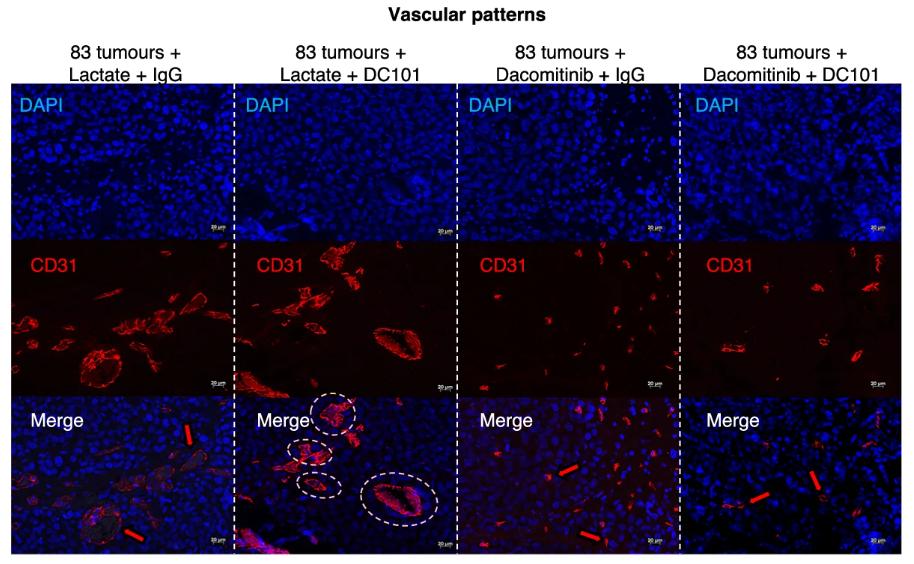Glioblastoma multiforme (GBM) is the most common and lethal form of primary astrocytic brain tumors and is associated with hypervascularity and heterogeneity. GBM "growth units" consist of glioma stem cells (GSCs), whose transcriptomes range from prothecal cells (PN) to mesenchymal cells (MES), reminiscent of the corresponding GBM subtypes. These characteristics arise from the superposition of differentiation programs and the potential impact of oncogenic mutations.
Typical in this regard is the amplification of the epidermal growth factor receptor (EGFR) and its activating truncation producing a variant (EGFRvIII) that affects intrinsic and non-cell-autonomous aspects of tumorigenesis. Notably, EGFR/EGFRvIII is typically expressed in MES-GSCs but not in PN-GSCs, a dichotomy whose biological consequences are unclear.
Tumors initiated by GSCs occur in complex tissue microenvironments, including perivascular and parenchymal niches. In contrast, GSCs are thought to have enhanced pro-angiogenic activity, including elevated production of vascular endothelial growth factor (VEGF) and other effects of pathological blood vessel growth and malformations that accompany GBM progression. Although targeting the VEGF angiogenic pathway produced significant vascular responses in GBM patients, it did not improve survival. These surprising results demonstrate that there are still gaps in the current understanding of GBM neovascularization mechanisms and their mediators.
Recently, researchers from the McGill University Health Center Research Institute published an article titled "Mesenchymal glioma stem cells trigger vasectasia—distinct neovascularization process stimulated by extracellular vesicles carrying EGFR" in the journal Nature Communications. This study reveals that mesenchymal glioma stem cells stimulate vasodilation through extracellular vesicles carrying EGFR, which is a unique neovascular process.
Targeted neovascularization in glioblastoma (GBM) is hampered by a poor understanding of its underlying mechanisms and unclear connections to the tumor molecular landscape. In the study, the researchers reported that different molecular subtypes of human GSCs trigger distinct endothelial responses, including angiogenesis or blood vessel dilation.

Figure 1. Distinct vascular patterns in GSC-driven tumors and vasoactivity of soluble and vesicular components of the glioma stem cell secretome. (Spinelli C, et al. 2024)
The latter process is selectively triggered by mesenchymal (but not membrane) GSCs and is mediated by a subset of extracellular vesicles (evs) capable of transferring EGFR/EGFRvIII transcripts to endothelial cells. By inhibiting EGFR expression and pH, either pharmacologically (Dacomitinib) or genetically (gene editing), it is possible to abolish their EV response in vitro and disrupt vasodilatation in vivo.
In mice, therapeutic inhibition of EGFR significantly prolonged the anticancer effects of VEGF blockade while abolishing vasodilation and extending survival. Therefore, vasodilation driven by cell-to-cell transfer of cancerous EGFR may represent a novel therapeutic target for a subset of GBMs.

Figure 2. Combined targeting of VEGFR2 and EGFR suppresses tumour growth and vasectasia. (Spinelli C, et al. 2024)
Taken together, these results suggest that vasodilation is a targetable process through EGFR inactivation and possibly through interference with its endothelial mediators and EV carriers. Interestingly, EGFR targeting appears to be able to overcome, at least in part, the acquired resistance of xenogeneic glioblastoma to VGF-driven inhibition of angiogenesis.
But the most important thing is that the regional heterogeneity and microenvironmental complexity of GBM, as well as stress factors such as hypoxia and treatment, are important backgrounds for vas deferens dilation. The researchers believe that a better understanding of EV-mediated processes in the GBM microenvironment may lead to precise treatments for new forms of this frustrating disease.
Reference
Spinelli C, et al. Mesenchymal glioma stem cells trigger vasectasia—distinct neovascularization process stimulated by extracellular vesicles carrying EGFR. Nature Communications, 2024, 15(1): 2865.

